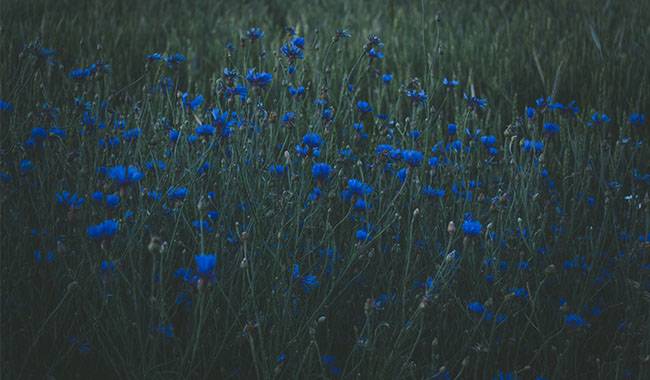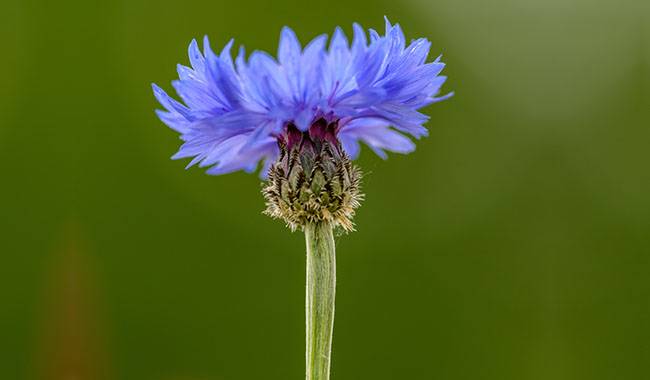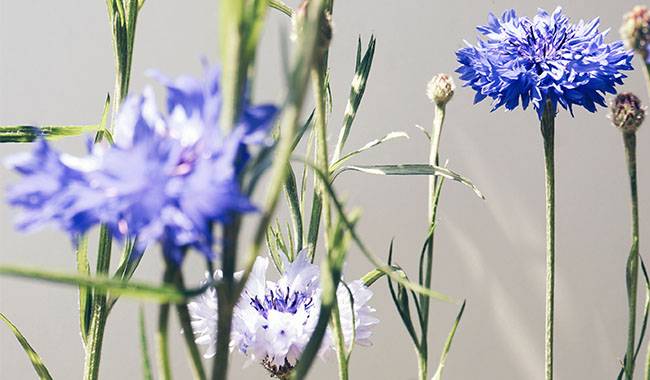
Every gardener wants to decorate his or her plot with beautiful flowers and plants. There is a wide variety of plants on the market, with different colors, sizes, and lifespans.
So how to grow cornflower from seed: do they need special care?
Gardeners are especially fond of wildflowers that they can cultivate themselves. It is to such plants including trapezoidal cornflowers that we will consider in more detail.
“Cornflower, cornflower, my favorite flower” – the words of the famous children’s song reflect the views and opinions of many women lovers of creating their own garden in the yard or in the neighborhood.
Growing cornflowers from seed is not a complicated process, as the plant is fairly unpretentious in terms of care and loves the sun, from which it only becomes more beautiful.
Today, this flower is widely used in landscaping, creating flower beds and various compositions that become a harmonious decoration for any garden and patio.
The wildflowers look very delicate and beautiful. Growing wild cornflower from seed is easy. It is a surprisingly undemanding plant that grows as freely as a true field cornflower.
But in contrast, breeders have bred varieties of varying shades. They can be not only blue but also white and purple. And some varieties are able to give inflorescences of different colors.
WHAT KIND OF SOIL DOES CORNFLOWER NEED?
The pedunculate inflorescence of the plant rises on thin stems half a meter high. They can be planted in rows in flower beds, or in small groups to create borders. The bouquets also look beautiful.
There are also low-growing varieties that look more interesting in flower beds. There is a reason why Terry Cornflowers are so popular with gardeners.
After all, they are not difficult to cultivate and do not require any special skills. Care work is also required very little. But there will still be some knowledge that is useful.
These plants can be safely grown from seed and immediately sown in the open ground. It is not necessary for seedlings. Although if there is a desire to raise potted flowers on the balcony, it is possible.
The best time for planting is April-May. It is necessary to pay attention to the soil. For cornflower cultivation, the following soil is best: drained, suspended, and non-acidic.
If the soil is alkaline, the color will be brighter and more saturated. Clay soil should be mixed with sand, acidic – with lime. This should be done well in advance, even before the onset of winter.
Before planting, the soil needs to be fertilized. To do this, add fertilizer in the selected area in the ratio of 2 kg per square meter: humus and peat, a tablespoon of nitrate card, 100 g of wood ash.
Pay attention to the location of this plot. Cornflowers like sunlight, they are light-loving. So there should be no shade on top.
Although these plants are unpretentious, they are able to bloom in the shade. However, this is not guaranteed. In addition, the blooms will not be as lush and the brightness of the color will be affected.
HOW DO I SOW THE SEEDS?
Now is the time to make a seedbed. The flower bed is reclaimed so that it reaches a depth of about 10inch (25cm). Then level the soil, rub it slightly and make a shallow trench.
Moisten it well before sowing the seeds. The top should be covered with pre-screened soil. At the end of the procedure, the plot is covered with a special cloth.
After planting, the bed should be watered. This is done directly through the fabric material and is repeated every few days. After about a week, the first shoots will appear.
At this point, the covering material should be removed. After a while, the shoots should be thinned out, leaving a distance of about 4inch (10cm). Future flowers should not shade each other.

SPECIAL CARE
Proper care is required for cornflowers to produce rich blooms and please the eye with bright colors. It includes regular feeding and watering.
Even before flowering, the soil should be fertilized. Urea and nitrate card are used for this purpose. They are each dissolved in a large spoon, with 10 liters of water.
Then, water the bed for the emergence preparations. It is only not recommended to overdo it: if the fertilizer will be too much, the leaves may turn yellow.
To accelerate the arrival of flowers, you can treat the plants with medicated growth preparations. Do this before the start of budding.
TIP! Cornflowers can be planted together with chrysanthemums, white chrysanthemums, summer anemones, and marigolds. Together they form a bright flower bed.
Care includes obligatory watering. It should be regular, but not too abundant. Overwatering can damage cornflowers and potentially make the plant disappear.
Weeds need to be removed and soil loosened. Terry cornflower is susceptible to a number of diseases. For example, spindle disease is common. It is easily recognized by the distinctive black spots on its leaves.
In this case, it is recommended to treat the plant with an anti-parasitic agent. Experienced horticulturists recommend trying more harmless preparations before using chemicals.
POSSIBLE PROBLEMS WITH CORNFLOWER
Such environmentally friendly means include ashes, on which flowers are spread. It can also be watered with a solution of fresh manure. For preparation, it is necessary to mix water and cowpeas in equal proportions. The mixture should be soaked for 3 days.
This solution not only fights the fungus well but also serves as a fertilizer. If these formulations prove ineffective, then already apply store preparations.
WORKING CALENDAR
Most cornflowers are annuals. If the gardener sows them down, then the next summer they already reproduce themselves. No additional planting is required.
Self-sowing must be controlled. If the sprouts appear too dense, they should be thinned. There are also perennial flowers. It is recommended to do rejuvenation every 4 years. The best method is to divide the bush.
The cultivation of trapezoidal cornflower can be guided by the following work periods.
In April When planting seeds, do it immediately in the open ground.
The care of plants in this period of May includes fertilization, for which a special compound fertilizer is suitable.
In June the bed should be watered, if necessary, to avoid overwatering. Soil loosening and weeding are also required.
Cornflower should continue to be watered in July. If planted densely enough, it is easier to care for because weeds grow more slowly.
By the end of August, it is time to remove the flowering inflorescences and collect the seeds.
Between September and October, the plants should be pruned. Weed around or dig a hole and fertilize if necessary. For acidic soils, liming is recommended every three years. Sprinkle lime or dolomite powder on the surface.
Cornflowers are delicate flowers that are very easy to grow. No seedlings are needed, and they grow right away in the open ground. And the soil can present quite a few problems, with a minimum of fertilizer.
Although it is often possible to grow without them. But like other ornamentals, cornflowers require some care. That means watering, weeding, and loosening the soil as needed. Then the flower beds will look bright and well maintained.





